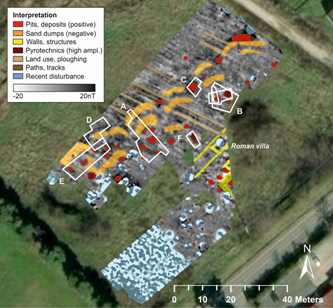Methodology
To test our hypotheses, we will employ geophysical, chemical and archaeological methods to study both the briquetage and saltern production modes in their environmental and geographical context. Archaeological features linked to briquetage or salterns can be identified through a combination of data captured by Magnetic Gradiometry and Ground Penetrating Radar, which allow the identification of spatial structures, of which the nature and function can be checked by coring surveys and archaeological excavations. To assess the use of the reddish jars, we will use a combination of data from use-alteration traces, vessel content (salt?) and functional, chemical and physical characteristics. Diagnostic potsherds from excavations and existing collections will be analysed. We will then try to reconstruct the political network in which the briquetage sites functioned using a diachronic model (Alessandri, 2016), linking chronological phases in complex time-space models (Bubble Model) before and after the birth of the Early States, embedding the salt production sites in the latter’s territories. Radiocarbon dates on organic material and thermoluminescence on pottery will provide the chronological framework, indicating the end of the briquetage technique and the first appearance of the saltern mode of production. Finally, we will assess the scale and evolution of input using statistical analyses on the already collected potsherds.
| Last modified: | 22 November 2021 11.12 a.m. |

